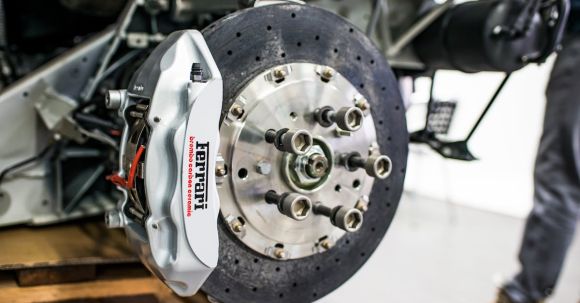Motorcycle brakes are a crucial component for ensuring safety and control while riding. Keeping them clean and well-maintained is essential for optimal performance. In this article, we will explore the importance of cleaning and maintaining motorcycle brakes, along with some useful tips to help you keep them in top shape.
Understanding the Basics
Before we delve into the cleaning and maintenance process, let’s understand the basic components of motorcycle brakes. A typical motorcycle braking system consists of brake pads, brake rotors (discs), calipers, and brake fluid. The brake pads are the contact points that apply pressure to the rotors, creating friction and stopping the bike. The calipers house the brake pads and provide the necessary force to stop the bike. Lastly, the brake fluid transmits the force from the brake lever to the calipers.
Cleaning the Brake Components
Regular cleaning of the brake components is vital to remove dirt, dust, and debris that can accumulate over time. Start by removing the brake calipers to gain access to the brake pads and rotors. Use a soft brush or a toothbrush to gently scrub the brake pads and rotors. Be careful not to use harsh chemicals or abrasive materials that may damage the surfaces.
Inspecting and Replacing Brake Pads
While cleaning the brake pads, take the opportunity to inspect their condition. Look for signs of wear, such as uneven thickness or cracks. If the brake pads are worn beyond a certain limit, it is advisable to replace them with new ones. Worn brake pads can compromise braking efficiency and pose a safety risk.
Checking Brake Rotors
After cleaning the brake pads, inspect the brake rotors for any signs of damage or wear. Look for deep grooves, cracks, or warping. If you notice any of these issues, it is recommended to replace the rotors. Damaged rotors can lead to uneven braking and reduced stopping power.
Maintaining Brake Fluid Levels
Brake fluid plays a crucial role in the braking system by transferring the force from the brake lever to the calipers. It is essential to regularly check the brake fluid levels and top up if necessary. Consult your motorcycle’s manual for the recommended type of brake fluid and the correct procedure for checking and adding fluid.
Bleeding the Brake System
Over time, air can get trapped in the brake system, leading to a spongy or unresponsive brake lever. Bleeding the brake system removes air bubbles and ensures optimal braking performance. This process involves draining and replacing the old brake fluid with fresh fluid.
To bleed the brake system, start by attaching a clear plastic tube to the bleed valve on the caliper. Place the other end of the tube in a container to collect the old fluid. Slowly pump the brake lever while keeping an eye on the fluid level in the master cylinder reservoir. Continue pumping until the new fluid comes out of the bleed valve, ensuring there are no air bubbles. Repeat this process for all calipers.
Regular Inspections and Test Rides
In addition to regular cleaning and maintenance, it is essential to perform routine inspections and test rides to ensure the overall health of your motorcycle brakes. Check for any unusual noises, vibrations, or changes in braking performance. If you notice any issues, address them promptly to avoid any potential accidents.
Conclusion: Ensuring Safety and Performance
Cleaning and maintaining motorcycle brakes are crucial for ensuring safety and optimal performance. By understanding the basic components and following the recommended cleaning and maintenance procedures, you can prolong the life of your brake components and enjoy a safe riding experience. Regular inspections and test rides will help you identify any potential issues early on, allowing for timely repairs or replacements. Remember, well-maintained brakes are the key to safe and enjoyable motorcycle rides.
